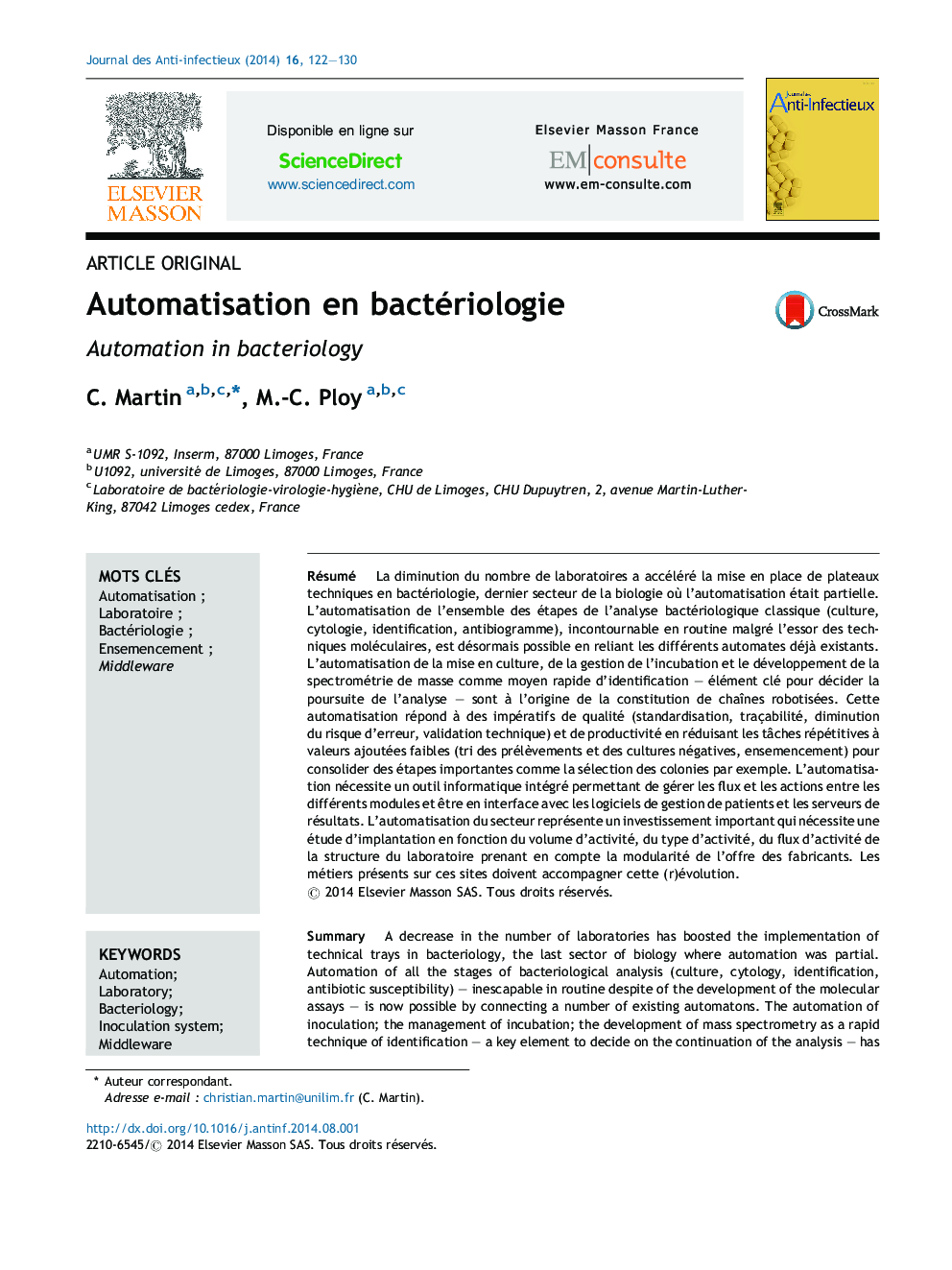| Article ID | Journal | Published Year | Pages | File Type |
|---|---|---|---|---|
| 3405339 | Journal des Anti-infectieux | 2014 | 9 Pages |
Abstract
A decrease in the number of laboratories has boosted the implementation of technical trays in bacteriology, the last sector of biology where automation was partial. Automation of all the stages of bacteriological analysis (culture, cytology, identification, antibiotic susceptibility) - inescapable in routine despite of the development of the molecular assays - is now possible by connecting a number of existing automatons. The automation of inoculation; the management of incubation; the development of mass spectrometry as a rapid technique of identification - a key element to decide on the continuation of the analysis - has initiated the constitution of the automated lines. This automation complies with quality requirements (standardization, traceability, decreased risk of technical error, validation) and increases productivity by reducing the repetitive tasks that have little added value (sorting specimens and negative cultures, inoculation) consolidating important steps such as the selection of colonies for example. This automation requires software that manages and interfaces the different modules with the patient management database and with the servers of results. Automation of the microbiology lab represents an important investment necessitating a study of volumes, types, activity flows and the structure of the laboratory, taking into account the modularity of the manufacturers offer. The different tasks in these labs must be adapted to this (r)evolution.
Related Topics
Health Sciences
Medicine and Dentistry
Infectious Diseases
Authors
C. Martin, M.-C. Ploy,
